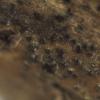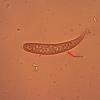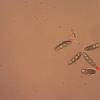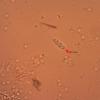
15-12-2025 15:48
 Danny Newman
Danny Newman
Melanospora cf. lagenaria on old, rotting, fallen

15-12-2025 15:54
 Johan Boonefaes
Johan Boonefaes
Unknown anamorph found on the ground in coastal sa

15-12-2025 21:11
 Hardware Tony
Hardware Tony
Small clavate hairs, negative croziers and IKI bb

15-12-2025 07:09
 Danny Newman
Danny Newman
indet. Rutstroemiaceae sp. on unk. fallen leavesMc

15-12-2025 07:05
 Danny Newman
Danny Newman
Pseudosclerococcum golindoi (det: Zotto)near Cosb

15-12-2025 11:49
 Danny Newman
Danny Newman
ITS sequences from the following two collections B

15-12-2025 12:34
 Danny Newman
Danny Newman
indet. Rhytismataceae on oak leafnear Purchase Roa

09-12-2025 12:06
 Andgelo Mombert
Andgelo Mombert
Bonjour,Je recherche l'article concernant Hypobryo
Lophiostoma or Massarina on Salix?
Marc Detollenaere,
10-01-2023 23:54
 Dear Forum,
Dear Forum,On dead branches of Salix sp, I found some immersed black perithecia. No slit-like beak was seen.The asci measured 90x15µ. Spores were hyaline, 3-septate with constriction at all septae and contained 4 large guttules. They measured 21-23x6.5µ.
Any ideas?
Eduard Osieck,
11-01-2023 11:21
Re : Lophiostoma or Massarina on Salix?
Hi Marc
Lophiotrema (Massarina) rubi is presumably the most likely option, but more species have such spores. This species should have a broad slime sheath, well visible in black ink.
Eduard
Lophiotrema (Massarina) rubi is presumably the most likely option, but more species have such spores. This species should have a broad slime sheath, well visible in black ink.
Eduard
Marc Detollenaere,
11-01-2023 12:26

Re : Lophiostoma or Massarina on Salix?
Thank you for your reply Eduard.I examined some more ascomata but I could not find any sheets around the spores. Is M rubi not descriped with only one septum?
I searched further and Lophiotrema nucula could fit.It starts with 1 septum and with age it is 3-septate. Following my sources, spores do not have mucous sheets here and it is known from Salix.
What do you think?
Marc
I searched further and Lophiotrema nucula could fit.It starts with 1 septum and with age it is 3-septate. Following my sources, spores do not have mucous sheets here and it is known from Salix.
What do you think?
Marc
Eduard Osieck,
12-01-2023 11:18
Re : Lophiostoma or Massarina on Salix?
That seems a close match, in particular because of the lacking sheath. My only doubt concerns the ascus form which should be cylindric in the genus Lophiotrema (see e.g. photo in Zhang et al. 2009). Both Lophiotrema rubi and L. nucula get additional septa with age (after release from the ascus). The unusual form shown on your photo could be an artefact. Was the slide made with water?
Eduard
Eduard



